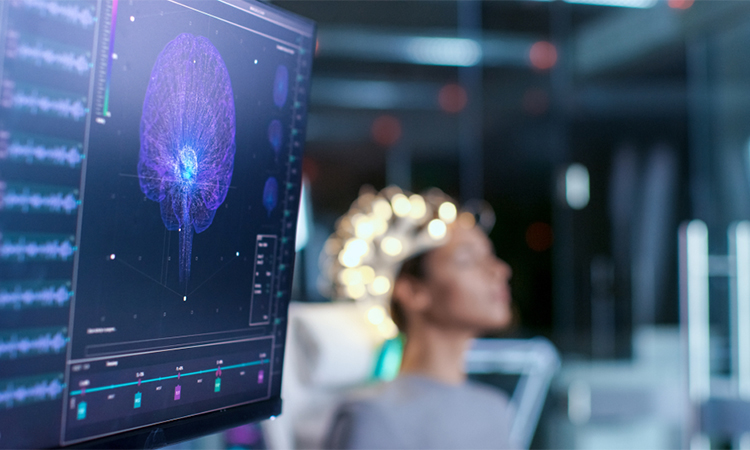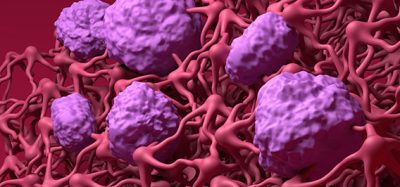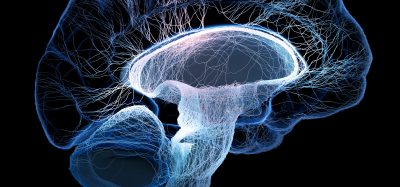Advancing neurological therapies with Dr Bruce Leuchter
Posted: 1 February 2024 | Dr Bruce Leuchter (Neurvati) | No comments yet
In the world of neuroscience, where the unmet medical need is vast and diverse, the journey to develop and commercialise treatments for neurological diseases, including rare conditions, is fraught with challenges. In this insightful interview with Dr Bruce Leuchter, President and CEO at Neurvati Neurosciences, with over two decades of experience, explores the hurdles faced by the sector and discusses the historical dynamics that have influenced investor interest. The conversation highlights Neurvati’s unique private equity model, offering a distinctive approach to advancing promising therapies in neuroscience. Dr Leuchter shares his perspectives on how precision medicine is shaping the future of neuroscience research and elaborates on Neurvati’s pivotal role in this evolving landscape.

What challenges has the industry faced in developing and commercialising treatments for neurological diseases, including rare diseases?
It’s a great question, because the challenges are numerous and it’s a very tough therapeutic area. But commitment to neuroscience drug development is critically important given the significant unmet medical needs and the ways in which patients, caregivers, and families suffer. There are a lot of drug development challenges that are, in some cases, unique to neuroscience, including neurological diseases, psychiatric disorders, and rare diseases affecting the nervous system.
Part of the challenge is that patients present with very different kinds of clinical phenotypes, meaning the populations are heterogeneous. Many diagnoses are made clinically based on a patient’s symptoms, as opposed to genetic testing or established biomarker profiles. This can present challenges when attempting to recruit an enriched patient population for clinical trials. The lack of homogeneity can introduce significant risk into mid-to-late stage studies.
What is the ultimate impact of heterogeneity associated with these disorders and diseases? I believe it can increase the risk of failed studies. Not failed drugs, but failed studies. In many cases, there are clear signs of biological activity that suggests that the drug is active but ultimately fails to deliver statistically significant results. This has been a hot button issue in neuroscience for as long as I can remember. Fortunately, our industry has made significant progress over the past several years in addressing the challenges that clinical heterogeneity can present. We are leveraging technological advances in human genetics, multi-omics, plasma and CSF biomarkers, neuroimaging, and neurophysiology to enrich patient populations. These precision technologies have yielded improvements in effect sizes. All stakeholders have benefited from these innovations.
Historically, what has limited investor interest in funding neurological and psychiatric therapies in development?
Investors have historically taken a ‘guilty until proven innocent’ approach to investing in neuroscience therapies. Given the high failure rate in the space, investors have been reluctant to fully engage until or unless a certain amount of risk has been discharged. They have preferred to wait on the side lines until clinical data suggest that a drug has real potential of delivering positive data in mid- to late-stage studies. In other therapeutic areas such as oncology and immunoscience, investors have been more willing to engage earlier in the development lifecycle. In my view, this is largely due to the precision with which these assets are developed. In some cases, this is driven by a clear understanding of the human genetic impact on disease processes. In other cases, well-established biomarker profiles enable patient enrichment strategies in early-stage clinical development.
When considering the execution challenges associated with developing neuroscience therapeutics, including capital requirements, development time horizon, and trial design complexities, it is not entirely unreasonable for investors to adopt a guilty until proven innocent view on investing in the space. That said, when you are able to discharge risk in early- to mid-stage development, the floodgates open and investors pile in. They appreciate the unmet medical need and the associated economic upside. Every constituency in our ecosystem is rooting for success, and when it happens you see folks lean in; strategics and investors alike.
Two recent transactions both occurring in Q4 2023 prove this point. In a roughly $14 billion deal, Bristol Myers Squibb acquired Karuna, a developer of treatments for schizophrenia and other forms of psychosis associated with neurodegenerative diseases. There was also AbbVie’s acquisition of Cerevel in a roughly $8 billion deal driven primarily by its M4 PAM along with other mid- to late-stage programs across neurological and psychiatric diseases. As soon as drug developers can begin to develop conviction, momentum increases. But the trick is to get through that guilty until proven innocent zone, at which point neuroscience companies find themselves in the driver’s seat.
Can you discuss Neurvati’s business model and how it may help overcome any challenges in advancing promising therapies in neuroscience? And, how do you think it compares to other models as well?
Neurvati’s model can be characterised as a private equity model for neurotherapeutics development. Given that Neurvati’s sole investor is Blackstone Life Sciences, it should come as no surprise that I view the world through that lens. It is fundamentally different than the classic venture-backed model, which is the standard model applied to neuroscience investing.
The classic venture-backed model often organises around early-stage technologies and limited clinical data. It is very challenging to develop a high level of conviction around the probability of technical and regulatory success when evaluating pre-proof-of-concept assets. The venture-backed model requires investors to embrace this risk with an eye toward major value inflection when the drug candidates progress through proof-of-concept studies.
Neurvati’s model is different. We look to engage around robust clinical datasets at the point when companies require significant financial resources and operational expertise to execute mid- to late-stage studies. We target assets in a different stage of the development lifecycle. We do not take on translational risk and early-stage development risk. We organise around clinical data that supports a high probability of success in mid- to late-stage development. Notably, the challenges associated with mid- to late-stage development are non-trivial and require different capabilities and expertise. We are well positioned to deliver success in these circumstances.
Having access to committed capital sufficient to fund mid- to late-stage development presents a much needed solution to neuroscience drug developers across the spectrum of biopharma companies, from privately held biotech companies to the large-cap biopharma companies. While each company is solving for its unique strategic objectives, all stand to benefit from leveraging our model.
Our team is comprised of senior leaders with decades of experience across all dimensions of the neuroscience industry. We have scientific and clinical leaders with multiple BLA and NDA credentials and other senior leaders with remarkable business development and transactional credentials. We cover all the bases and we understand the challenges that neuroscience drug development presents because we’ve lived it and we’re eager to apply our expertise to projects across the neuroscience waterfront.
How does Neurvati determine which programmes or assets are sufficiently de-risked? Are there specific therapeutic approaches or modalities that the company looks for when assessing options?
In Neurvati’s model, we first and foremost focus on human and proof-of-concept data, which gives us confidence in a development program or asset. Provided that existing clinical data are compelling, the disease areas we can consider are unlimited. We do not restrict our work to specific therapeutic modalities or targets. The organizing principle is the data package. This degree of flexibility enables a broad range of opportunities.
Now, how we get to conviction in a peri-proof-of-concept world is a bit of a triangulation exercise. Is the mechanistic rationale bona fide? Has the biological risk been discharged? Do the safety and tolerability profiles meet our standards? Is the regulatory path clear? Do we believe that data are reproducible? These are all key questions we aim to answer as we consider opportunities.
Can you discuss GRIN? Neurvati’s business model led to the establishment of the company?
GRIN Therapeutics is our first subsidiary company, our first asset company, created at the same time Neurvati was established. We have been hard at work for two-and-a-half years on developing a precision treatment for GRIN-related disorders, a genetically defined developmental epileptic encephalopathy. It’s a great example of how our model works. We were able to license a molecule from a multi-national pharmaceutical company. That molecule had safety data from several hundred patients. The molecule was well understood and well characterised, with a scientific thesis that was genetically defined.
GRIN-related disorders are genetically defined developmental epileptic encephalomyopathies, or DEEs. Given that the patient population is defined based on a specific genetic mutation, there is a very precise approach that we take with each patient to understand their mutation, characterize their variant, assess their trial eligibility, and then enrol them into the trial. What’s different about our approach is that we take a ‘rifle shot’ at the underlying cause of the disease – dysfunctional NMDA receptors. Unlike many companies developing novel treatment for DEEs we aim to target the broader syndrome. We aim to control the epilepsy while also modifying the neurobehavioral symptoms.
We have a dedicated team of people who are executing against GRIN every day. Our subsidiary company leverages our neuroscience expertise and our mid- to late-stage clinical development expertise. The biological and mechanistic rationale associated with our lead molecule allows us to pursue other development epileptic encephalopathies and rare paediatric epilepsies beyond GRIN-related disorders. We look forward to initiating studies in those indications this year.
What do you predict for the future of neuroscience research in the next several years, and Neurvati’s role in this?
The future success of neuroscience drug development hinges on our ability to develop targeted therapies using precision technologies. I recognise that the term ‘precision medicines’ can mean different things to different people. To us, it means figuring out how to enrol the right patient in the right kind of study to deliver maximum effect. The clinical development successes we have seen in the monogenetic disease space are remarkable and serve as the best example of how precision therapeutics can drive transformational clinical benefit. Our goal is to identify ways to leverage other forms of precision technologies to realize success across many diseases of the brain and nervous system.
While genetic medicines have emerged as a transformational tool to target rare genetically defined neurological diseases, other technologies have evolved considerably over the past 5-10 years and are now being used more commonly to develop precision medicines. As I mentioned earlier, the use of neurophysiology, neuroimaging, and plasma and CSF biomarkers to enrich patient populations in clinical trials has the potential to enhance effect sizes and ultimately deliver better patient outcomes. I think that we’ll continue to see more adoption of these technologies in neuroscience drug development in the years to come. As I speak with stakeholders in our neuroscience ecosystem, whether they are operators of emerging growth biotechnology companies, executives at large-cap biopharma companies, or investors, everyone is focusing on developing precision medicines for diseases of the brain and nervous system. There is a level of optimism around neuroscience drug development that I have not seen since the late 1990s and I am hopeful that we can leverage this momentum to deliver many transformational new treatments for the patients and caregivers who are counting on us.
About the author
 Dr Bruce Leuchter
Dr Bruce Leuchter
President and CEO at Neurvati
Dr Leuchter brings deep-rooted, wide-ranging experience to his role as President and CEO at Neurvati, spanning neuroscience, clinical neuropsychiatry, biotechnology equity research, healthcare investment banking and entrepreneurship. His expertise captures all aspects of building and leading a neuroscience company, and his experiences have generated deep empathy for the patient journey. Across his many roles in the clinic, industry, and beyond, Dr Leuchter has maintained a passion for knowledge and has aimed to purposefully apply that knowledge to help patients suffering from diseases of the brain and nervous system.
A physician by training and neuropsychiatrist by specialty, Dr Leuchter completed residency training in Neurology and Psychiatry at New York Presbyterian Hospital and Weill Cornell Medical College and is a Diplomate of the American Board of Psychiatry and Neurology. Dr Leuchter served as Director of Clinical Neuropsychiatry at Weill Cornell Medical College and maintains a voluntary faculty appointment in the Department of Psychiatry.
Dr Leuchter has also held multiple financial services roles including biotechnology equity research at Goldman Sachs, healthcare investment banking at Credits Suisse, and biotechnology mergers and acquisitions at PJT Partners, all of which drive a nuanced understanding of the biotechnology industry and particularly the neuroscience ecosystem.
Dr Leuchter is Co-Founder and Founding Neuropsychiatrist of a digital therapeutics company, Click Therapeutics, which specialises in the treatment of neurological and psychiatric disorders. He serves as a member of the Scientific Advisory Committee for the Daedelus Fund for Innovation at Weill Cornell Medical College, as a member of the Life Science Institute Leadership Council at the University of Michigan, as a member of the Advisory Board at Michigan Drug Discovery, and as a Business Advisory Board member at FOXG1 Research Foundation.
Related topics
Neurosciences
Related conditions
Neurological disease
Related organisations
GRIN Therapeutics, Neurvati
Related people
Dr Bruce Leuchter (Neurvati)







